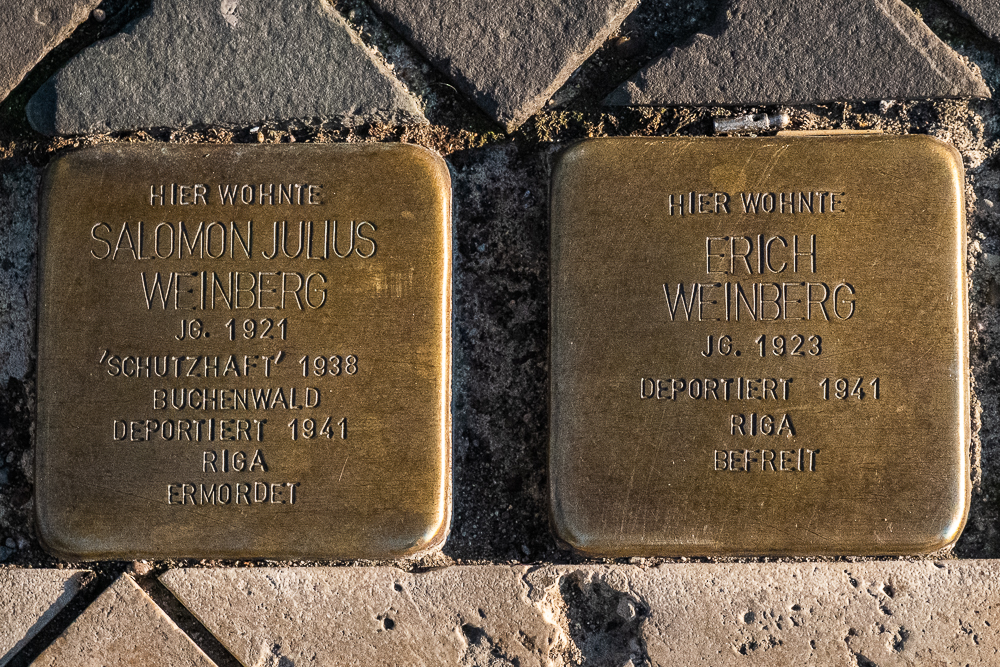While Astrid rested, her cousins Barbara and Jutta and I rode e-bikes all over Warburg, a town of about 25,000 where Jutta and her husband Hans-Juergen have lived for over 30 years. Jutta gave us a tour of both the old and new cities. After lunch, Barbara, Jutta, and I met Ruth, a Warburg local who leads narrated and customized tours of Warburg. She shared general and Jewish historical stories of this town. Below, I share my favorite photos from both Jutta’s e-bike and Ruth’s walking tours of this quaint and beautiful town.
First view of the city from the bike trail
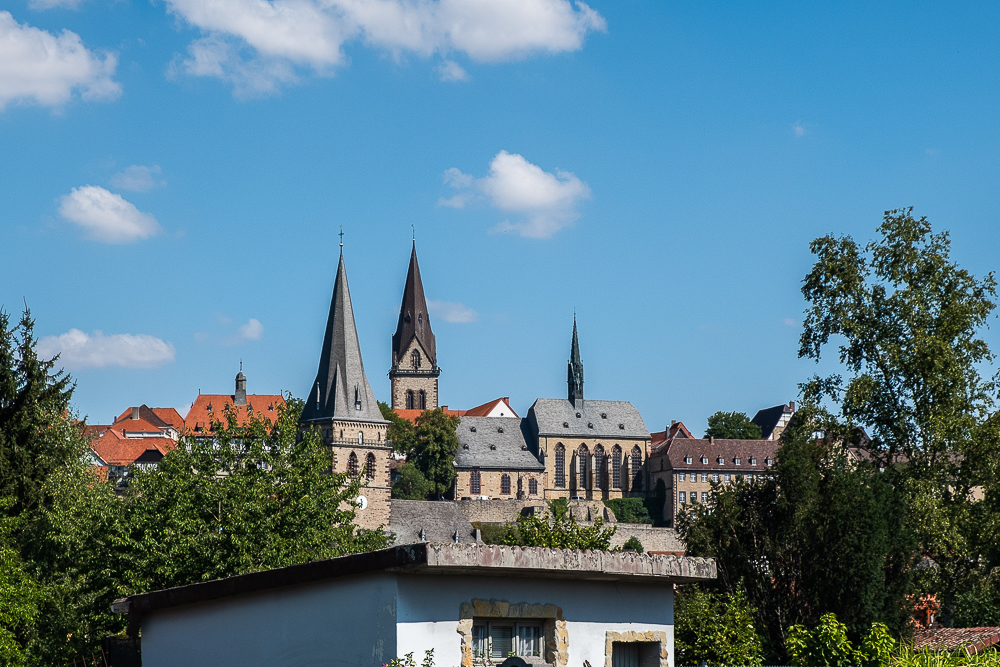
Warburg was a member of the Hansestadt in 1364. “In the Middle Ages the Hanse (Hanseatic League) was a powerful alliance of independent trading centres on the Baltic and North Sea coasts. Its aim was to represent and protect the common commercial interests of its members. From the time of the Thirty Years’ War up to the present the Hanseatic tradition has been continued by Lübeck, Hamburg and Bremen in particular.” (https://www.collinsdictionary.com/us/dictionary/german-english/hansestadt)

Barbara and Jutta with the leather making statue in the Altstadt (Old Town)
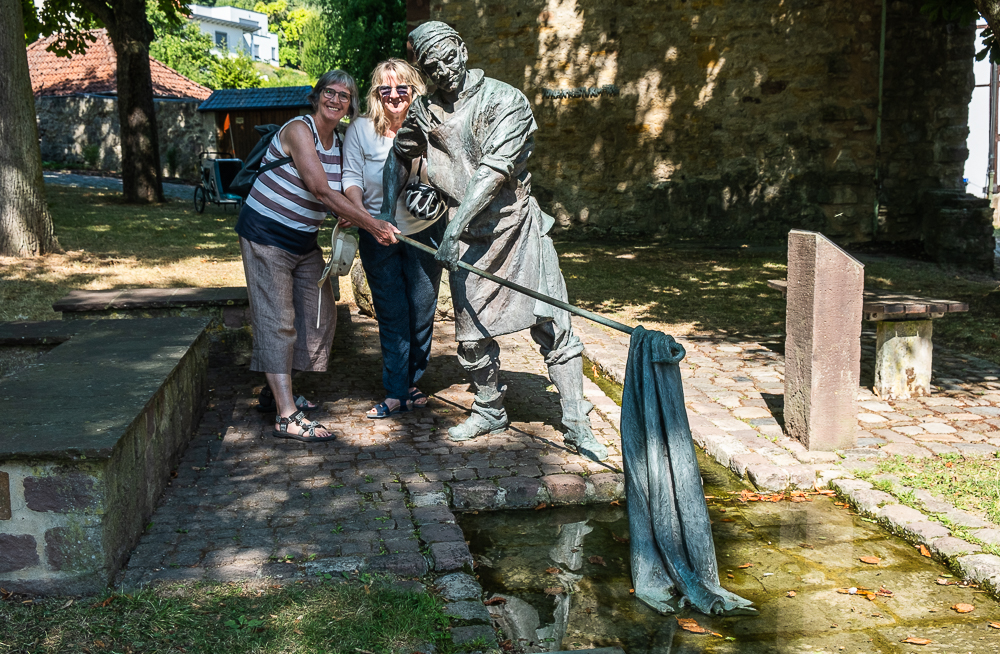
Me helping the statue – hey, it’s hard work! 🙂
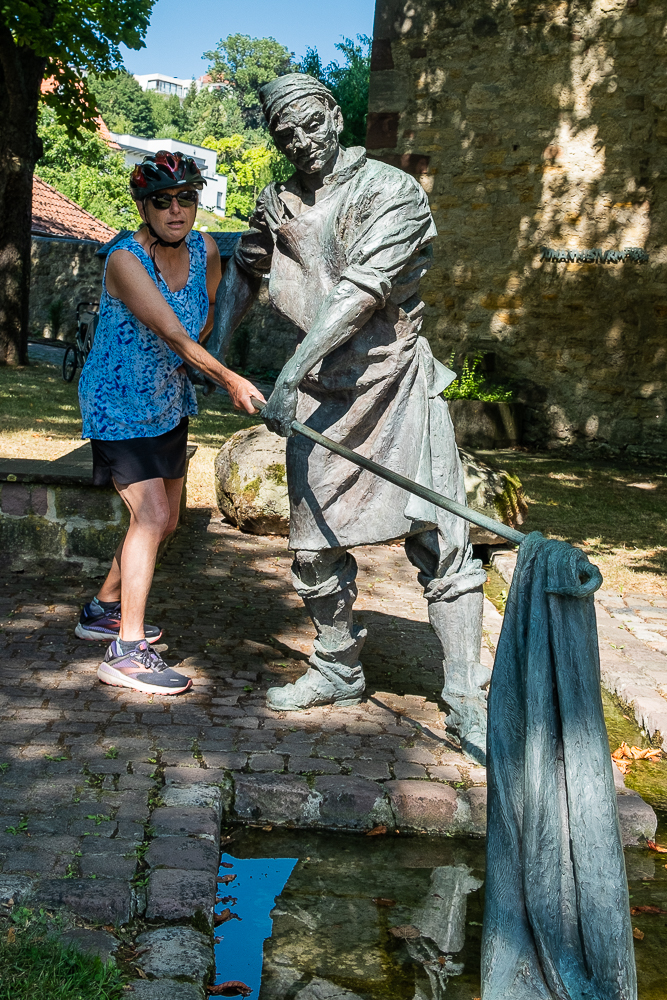
Close up of the statue

Jutta – our morning tour guide

Trabant (aka Trabi) – East German car made out of plastic; Hans-Juergen’s sister, after the wall fell, came with five people in this type of vehicle to visit Hans-Juergen – and they stayed for three weeks!
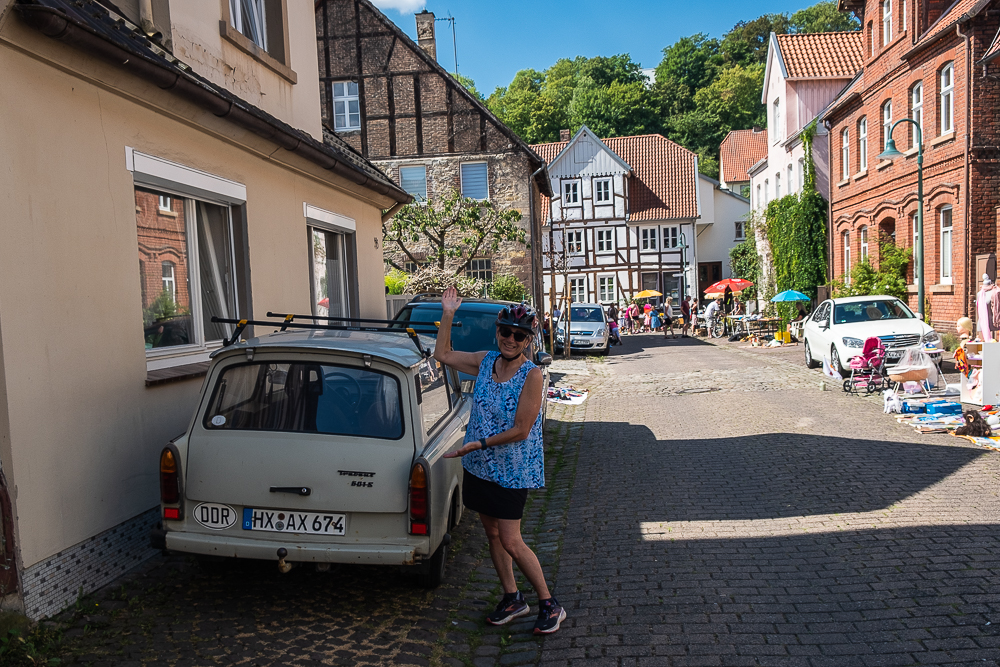
More views of the city…

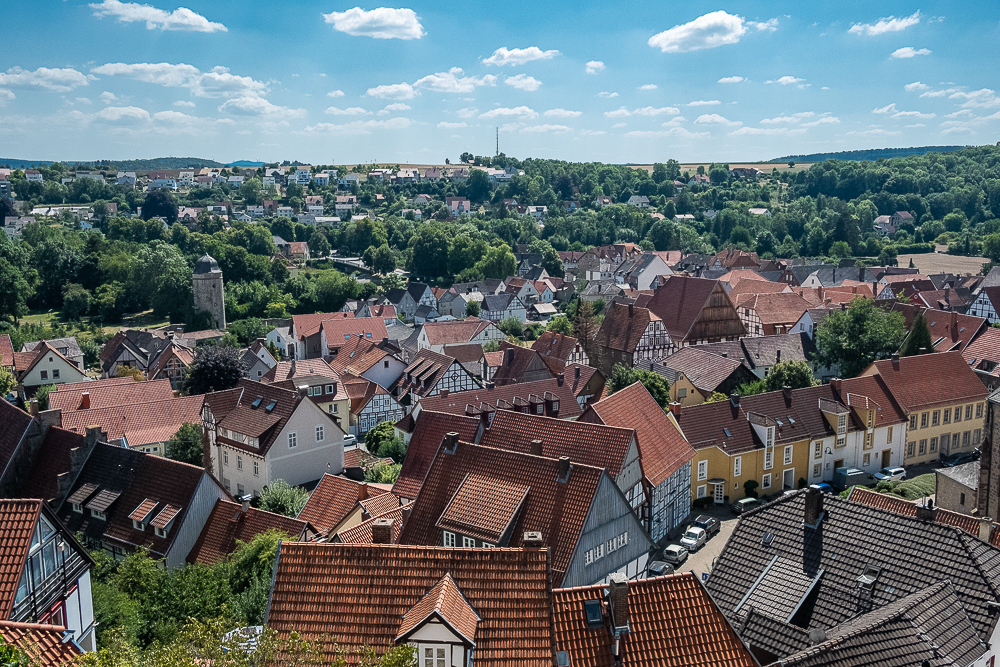


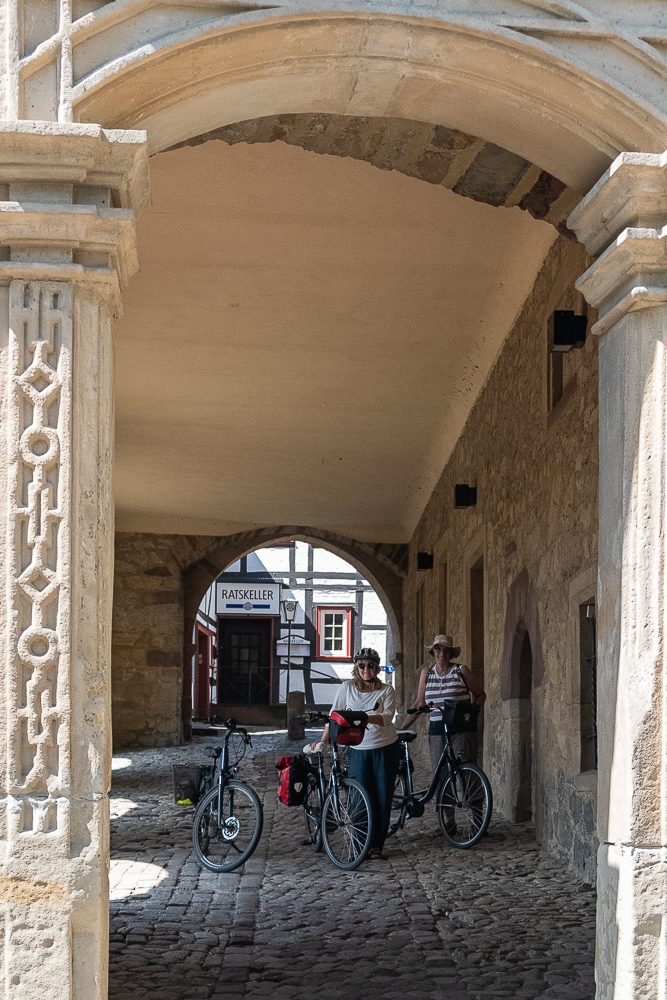
In 1944, resistance fighter Josef Wirmer, whose father was the headmaster of the gymnasium in Warburg, attempted to assassinate Adolf Hitler. He was unsuccessful, arrested, and hanged. This monument to his bravery stands on the grounds of his father’s gymnasium.
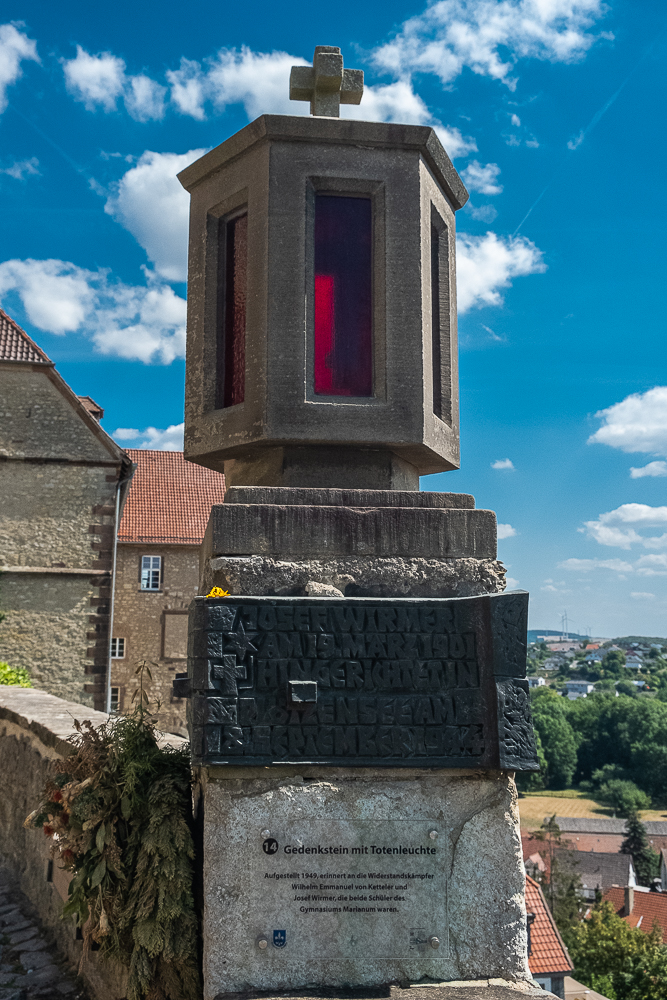
Warburg consists of the Old Town and the New Town, with the New Town only being 30 years younger. The Town Hall, meeting room shown below, is located between both sections.

Coat of Arms for North Rhine-Westphalia: The white line before green background symbolizes the river Rhine, the white horse signifies Westphalia, and the red rose stands for the Lippe region of the area.
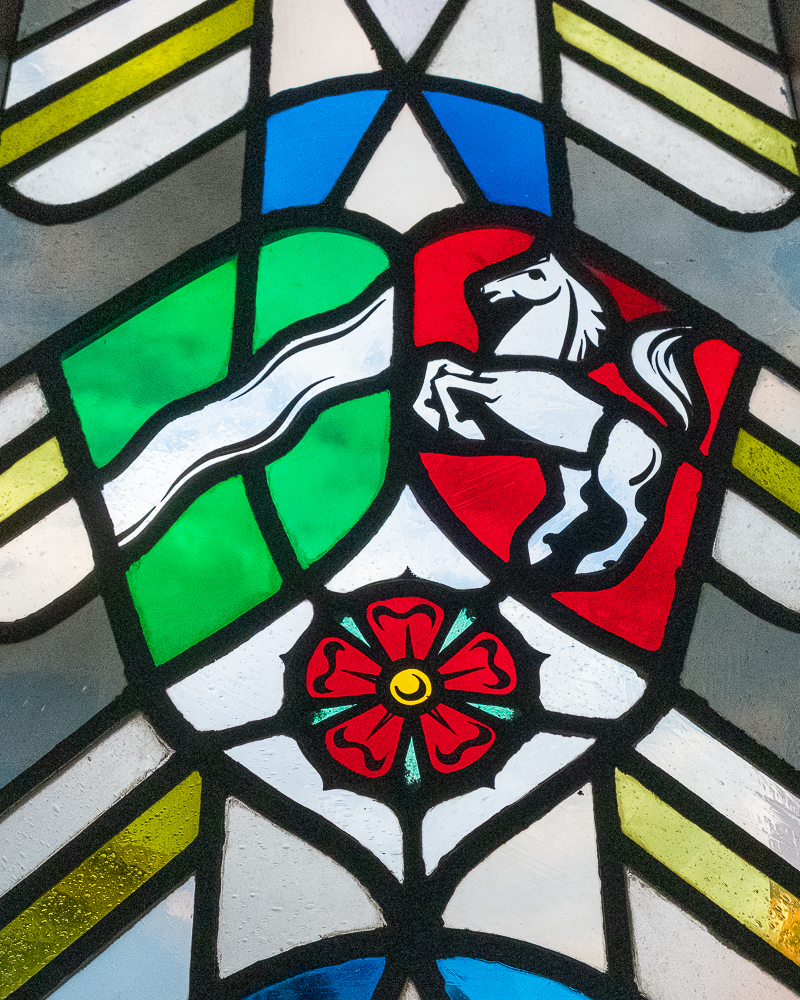
Guard tower which used to be part of the city wall – the little “house” on the side is the toilet!

Below Erasmus Chapel is a crypt (shown in this photo) which was part of the palace of an earl that died in 1020. In the 17th century, pilgrims sought healing in this crypt. Fifty-two wonder healings supposedly occurred here. The acoustics allow even someone whispering to be heard.
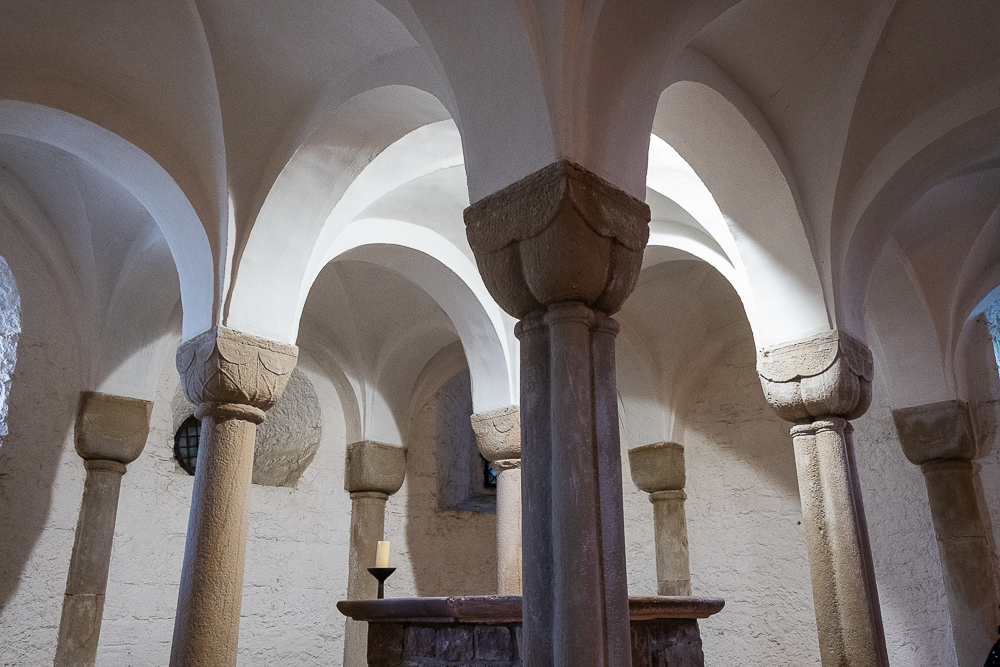
Outside the Jewish Cemetery is a list of all Jews from Warburg who were deported during the Second World War.

Some headstones in the Jewish Cemetery are written in German, some in Hebrew, and some in both languages.
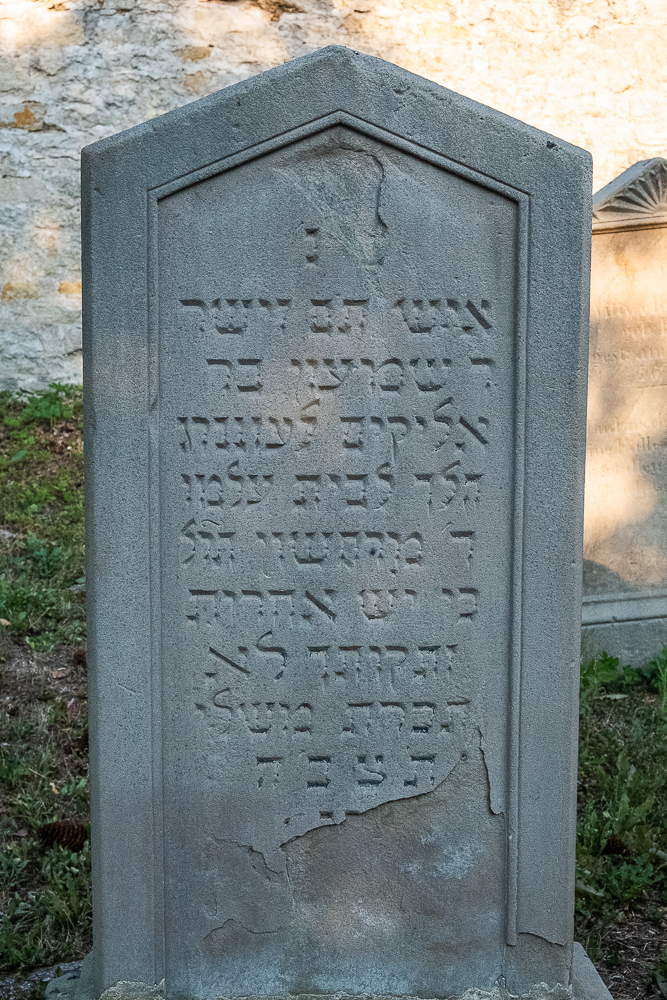
Our tour guide Ruth and her friend, Irmgard Heuel, are placing stumbling stones all over the city, commemorating every Jew who lived in Warburg and those non-Jews who helped them. They are also writing the histories of all of the individuals. [https://www.nw.de/lokal/kreis_hoexter/warburg/23216152_Erinnerung-an-juedische-Mitbuerger-30-neue-Stolpersteine-fuer-Warburg.html and https://images.app.goo.gl/ac41c2w7FZZigLHg7]
